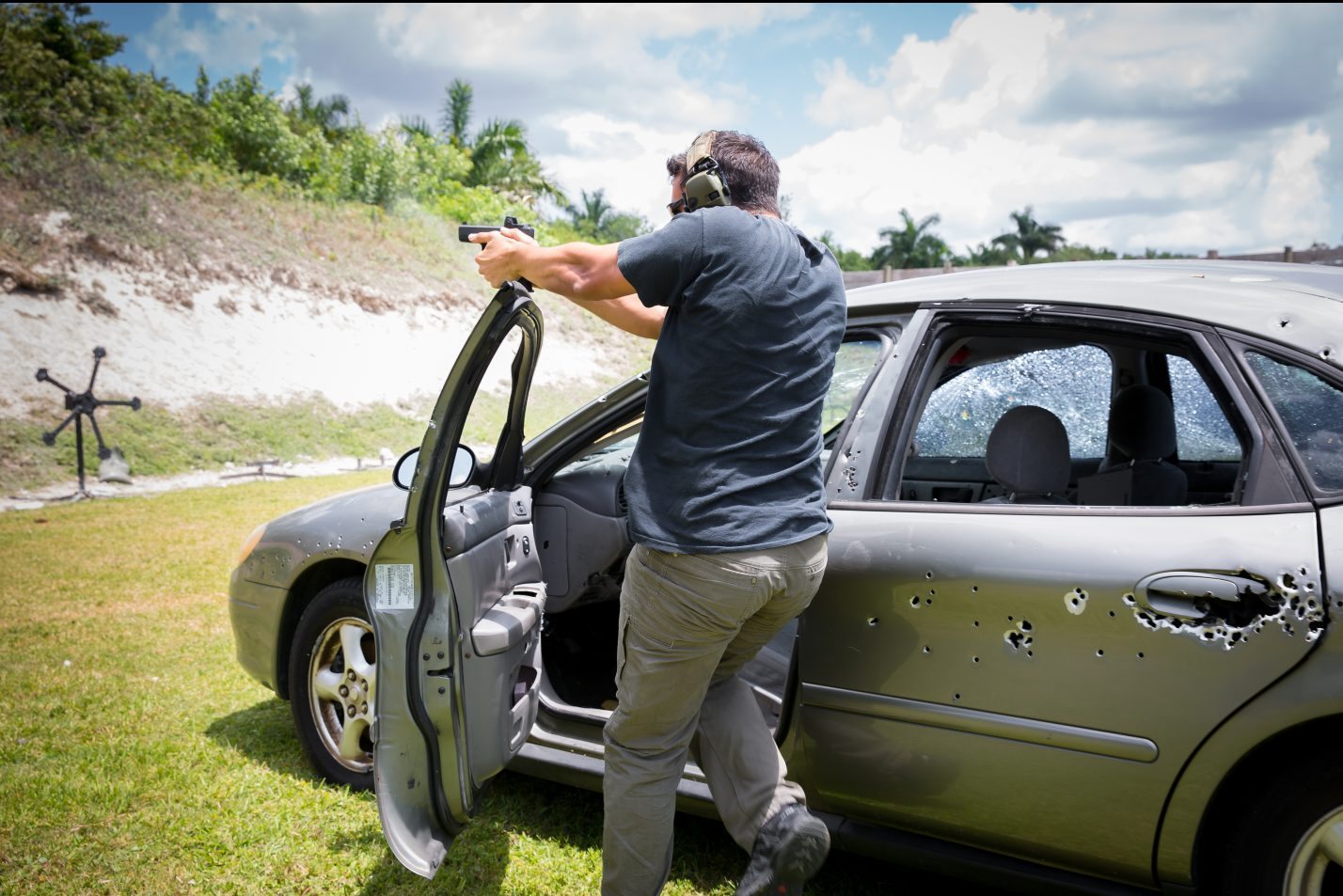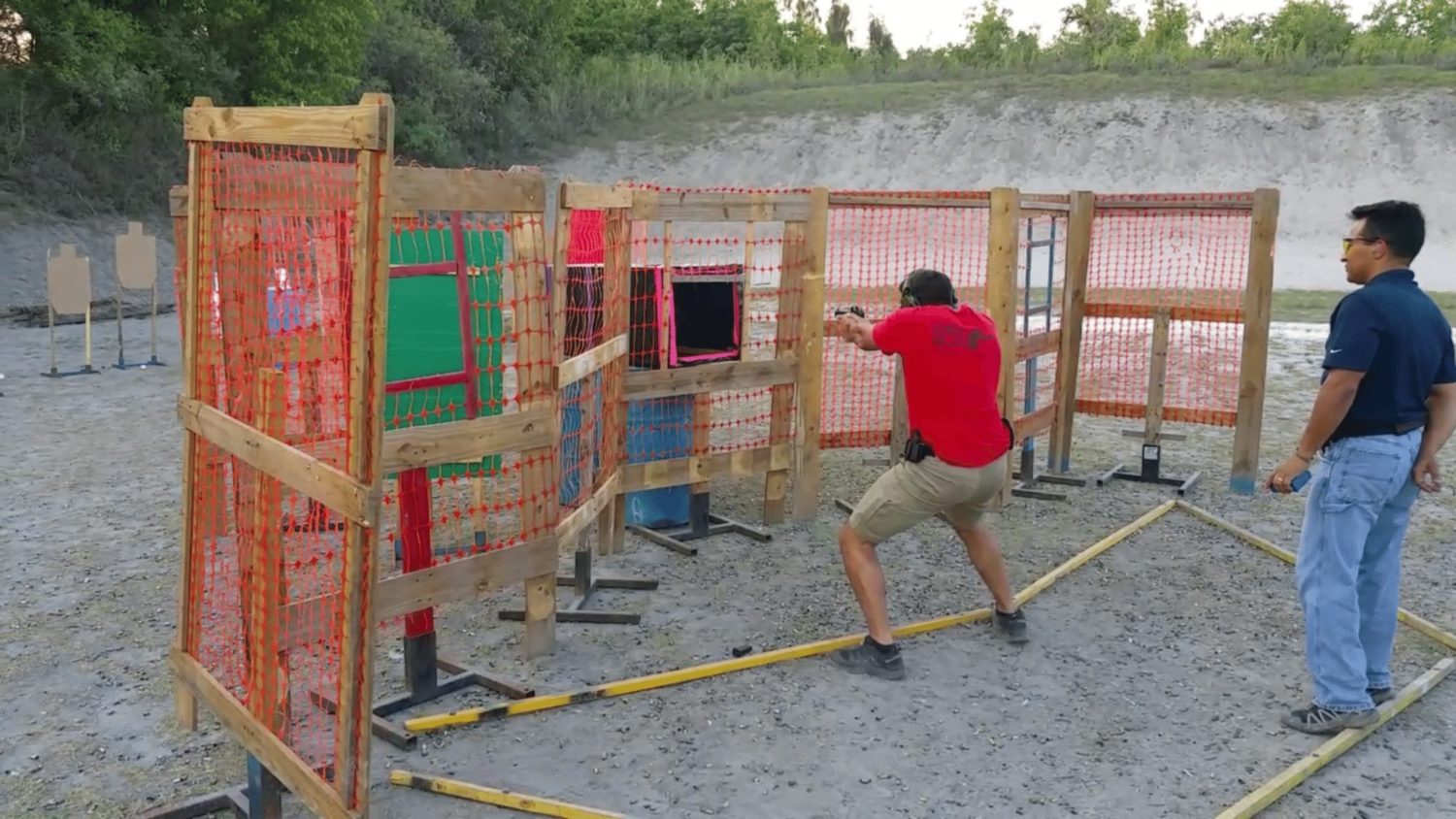Which is better?
What should you practice?
How should you practice?
Where do you get these exercises / drills to practice?
PC: CMG Photography by Chris Goddard
Intro
Most people I encounter whether in classes or competition tend to have a mindset towards either defensive/tactical shooting or a Performance/competition type shooting. It’s unfortunate that some have such closed minded views in the shooting community. There is a vast amount of knowledge that comes from all sides. I understand the separation because one is a game and the other is the defense of life. So, why can’t we train both ways? Why is there a separation, aren’t they both shooting?
Part 1: Which is better?
Personally I put the two in the blender (that is in my head) and turn that bad boy on. I grew up shooting with my grandfather just target shooting which technically doesn’t even fall into either of these categories. Then, I joined the military and learned the defensive/offensive or tactical side of shooting and quickly noticed it wasn’t enough. So, I searched for a place where I could learn more and make me a better shooter.
Oddly enough it was in the competition shooting world. So, I began with International Defensive Pistol Association (IDPA) competitions because they appealed to my “Self-defense” practice. Which is how I justified it. With no prior knowledge of competitive shooting, I quickly noticed that the defensive style of shooting I was taught was too slow and antiquated. Then I came across Frank Proctor from Way of the Gun. He opened up my eyes to the benefits of performance shooting and how it could make me a better defensive shooter. That’s when I started to look at it as a sort of gym session.
For example, when you go to the gym you work different muscle groups for your overall fitness and well-being. The same mindset can be put into competition. Each stage has a different set up. Some force you to go slower working on fundamentals such as one handed shooting and a myriad of different smaller skills to complete a stage which is similar to doing a set in a good circuit workout. Then on to your next stage or set.
I then started shooting United States Practical Shooting Association (USPSA) and really honed my speed and efficiency to the point where I was teaching to my fellow Rangers my blended ways and using those skills in a more realistic environment. In the past year, I have been going to Aaron Cowan from Sage Dynamics to train on the defensive side of shooting and mindset.
I quickly saw that he and I shared many of the same thoughts on incapacitating threats and was very happy to learn more from a very knowledgeable person. I have found that blending my Combat, Competitive, and Defensive shooting experience has served me well in many ways including raised my level of training and knowledge over the years.
When I compete some friends ask “what is the point of shooting competition if it is not going to work in a defensive setting?” I understand where they are coming from but they are not looking at the big picture and they are flat out wrong. There are many ways that you can benefit from competing. The timer and the additional eyes watching form a sort of stress that you don’t get when you practice some defensive shooting, especially by yourself.
Competition also forces you to use the fundamentals of shooting in a pace that most do not practice and that is where you see some people fall apart. Hopefully they learn from their mistakes and can work on those short comings. Planning, many call it “gaming”, but I have never gone on a mission that was not planned, I have never seen a “Tactical” team do raids or warrants without prior planning. So, learn to plan, competition will teach you to start using the basics of planning and from there you can grow to plan more complex multi-platform scenarios.
The video below simulates a situation where the driver is the only person carrying a firearm and the vehicle is unable to be moved (I also used a little verbal motivation to get the passenger out of the car):
Now not all things in competition are virtuous. There are bad habits that can come from it to include not using cover properly by exposing yourself to all the targets. Letting the game rules dictate the way you must engage targets, and the dreaded unload and show clear shenanigans. When I see people using cover incorrectly, I get this chill down my spine knowing full well that if that target had been returning fire, that person would most likely be feeling some hurt.
I understand the rules state differently. So, make sure you know what game you are playing. Furthermore, two shots per target is not the right answer when it comes to stopping a lethal threat, but in the game that’s what’s in the rules. Just like with cover, be sure to have the mindset to know what you are doing and train for both cases. For example don’t train in your competition gear if you are doing some self-defensive training, use your carry gear.
However, the worst training scar, bad habit, and “please don’t do this in a fight for a life” is the “unload” – “show clear” – “hammer down” – “holster”…Ugh! I have seen it countless times in shoot houses, SWAT ranges, Military training, federal law enforcement and training classes. For example, they will engage a target or two and mid run will drop the magazine, lock the slide to the rear, then realize what they have done and reload the firearm and continue.
This is by far something most people need to make a modification to. I like to change it to my own version, now it may sound unnecessary or stupid but it builds better habits for someone who competes and also fights. When the end of the stage or run is complete (doesn’t matter whether tactical or competitive) and you must unload your gun (Usually only in competition), before you drop the magazine take a breath.
Look at your targets. Look at the range safety officer. Examine your surroundings, then release the mag, lock the slide to the rear to show it’s clear. Send the slide forward using your preferred method. Get a good sight picture. Press the trigger for a good dry practice shot, then holster. This will instill a ton of good habits and also piss off everyone waiting. I could care less for I am always training, and so should you!
The video below demonstrates the clearing technique I use:
In part 2, I will talk about: What should you practice?


